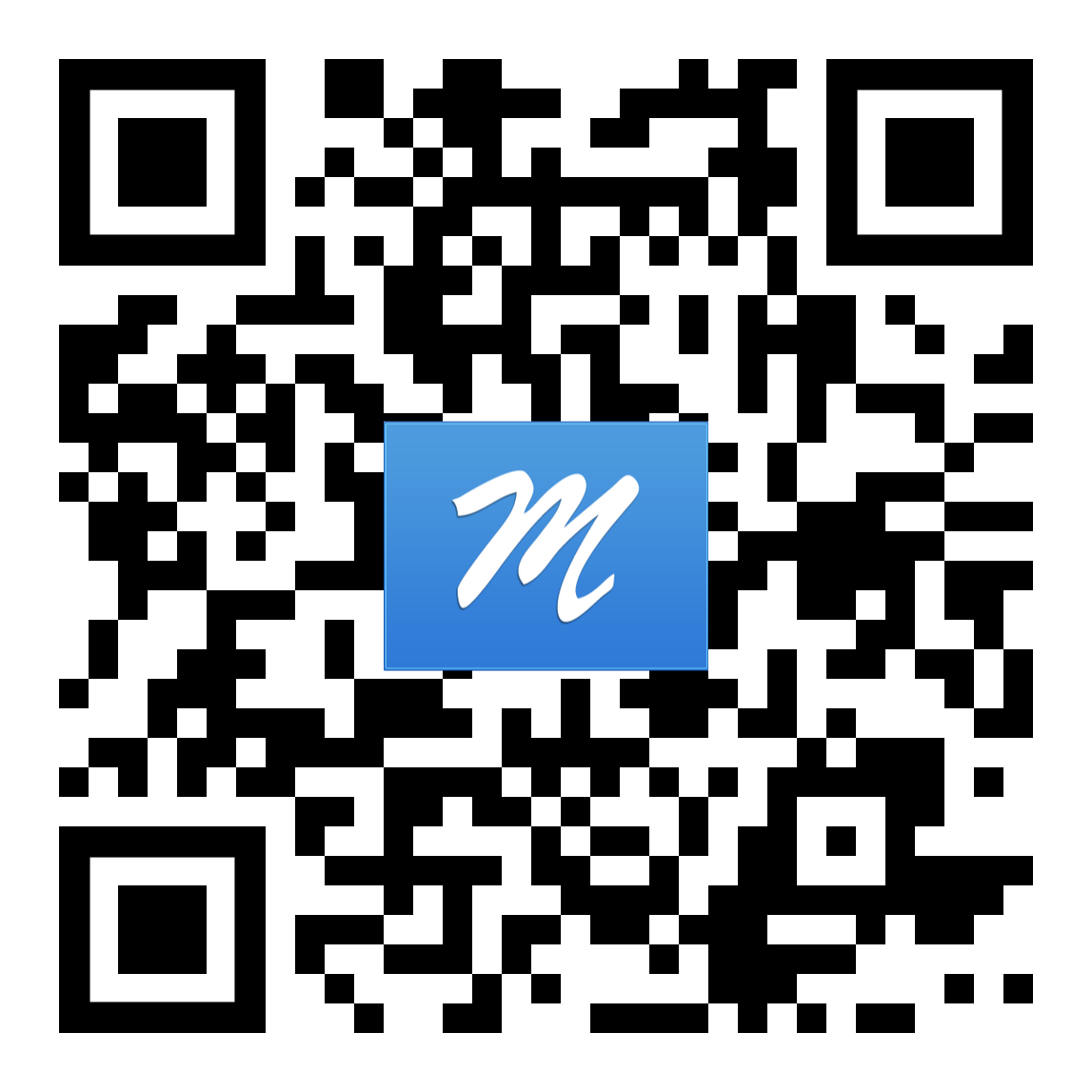Astrophysical aspects of $r$-process nucleosynthesis in neutron star mergers

LA-UR-19-24076
Matthew Mumpower
Notre Dame Astro. Seminar
Tuesday April 30$^{th}$ 2019

Center
for Theoretical
ASTROPHYSICS
Outline
Heavy element nucleosynthesis in mergers
Accretion disks
Morphology and composition
Future $\gamma$-ray observations
Concluding remarks
Neutron stars
Mass of around 1.1 to 3 M$_\odot$
Density $10^{9}$ to $10^{17}$ kg/m$^{3}$
Magnetic field $10^{10}$ Tesla
Color depends on equation of state...
A close binary of neutron stars
GW170817 - named for the day it was discovered
NGC 4993 - about 40 Mpc away
A close binary of neutron stars
Important for GCE
Coalescence time: ~1 million years
GW waves are emitted
Chirp mass $\sim 1.188$
implies NS binary
Neutron stars merge
Electromagnetic counterpart
Kilonova: powered by the radioactive decay of heavy nuclei

Model assumptions: M$_{\textrm{ej}} = 10^{-2}$ M$_\odot$, V$_{\textrm{ej}}=0.3$c
Very low lanthanide fraction
Electromagnetic counterpart
Kilonova: powered by the radioactive decay of heavy nuclei

To match data at later times
Some lanthanide production is needed
Schematic of a kilonova
2 component model: wind & dynamical eject
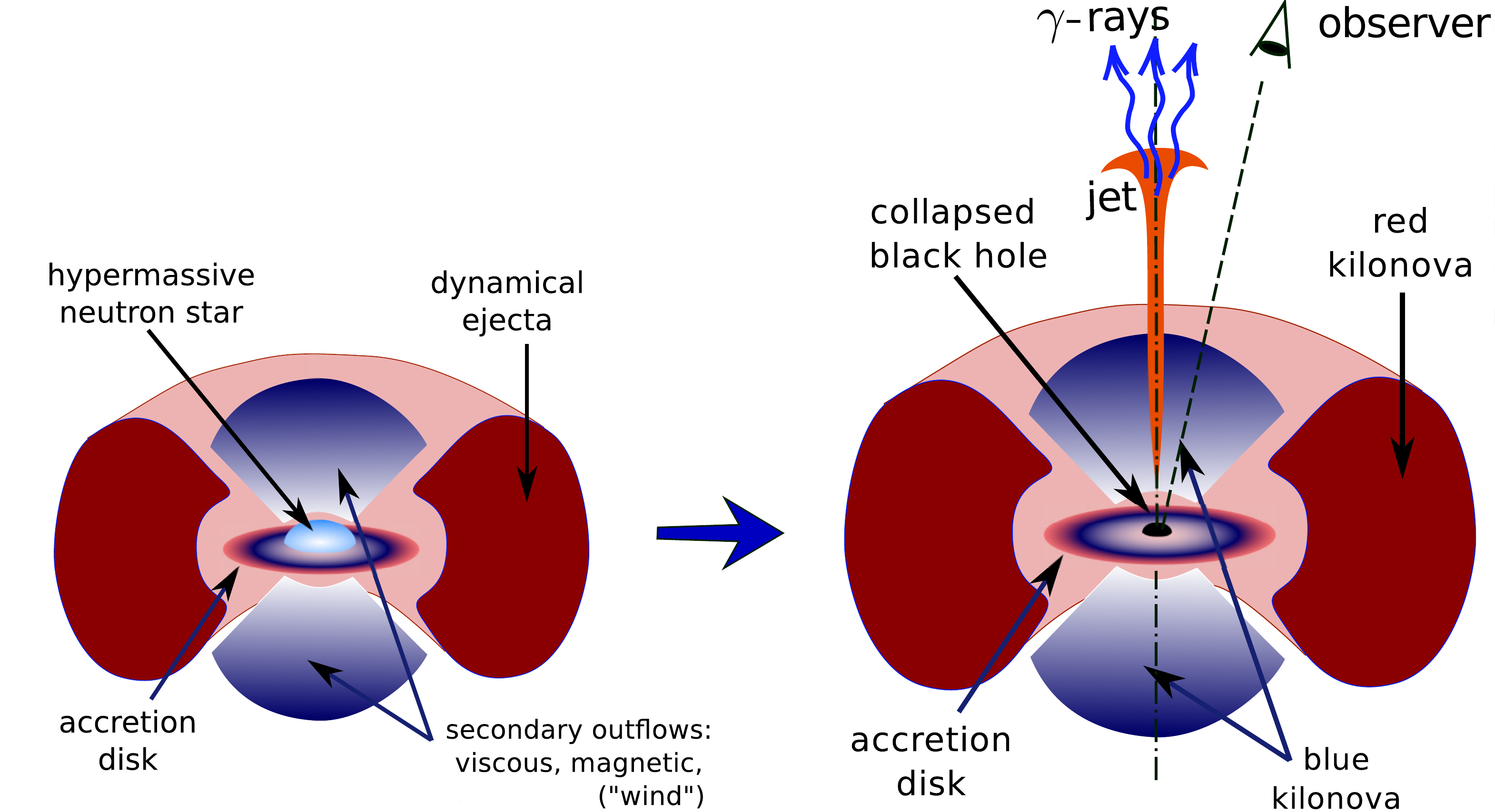
Red emission: late (weeks); lanthanide dominated
blue emission: early (days); 1st 2nd peak dominated
Do mergers produce a solar like r-process?

To answer this question:
Knowledge of astrophysical conditions
Knowledge of nuclear physics inputs (1000's of unknown species / properties)
And precise observations!
Modeling
Accretion Disks
Distribution of $Y_e$
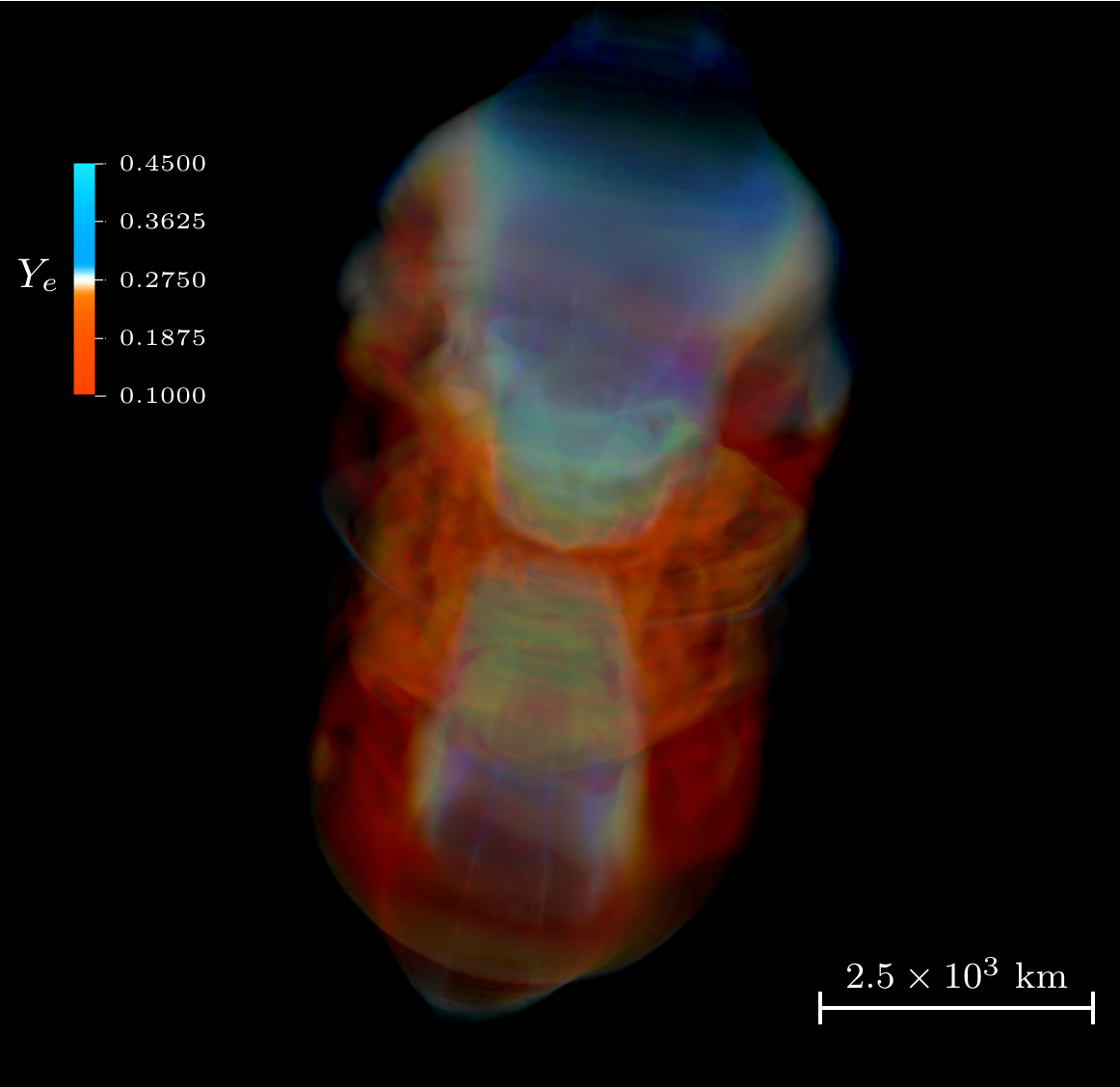
Volume rendering of electron fraction, $Y_e$
Jet drives material and voids region near azimuthal axis; high $Y_e$
Accretion Disk
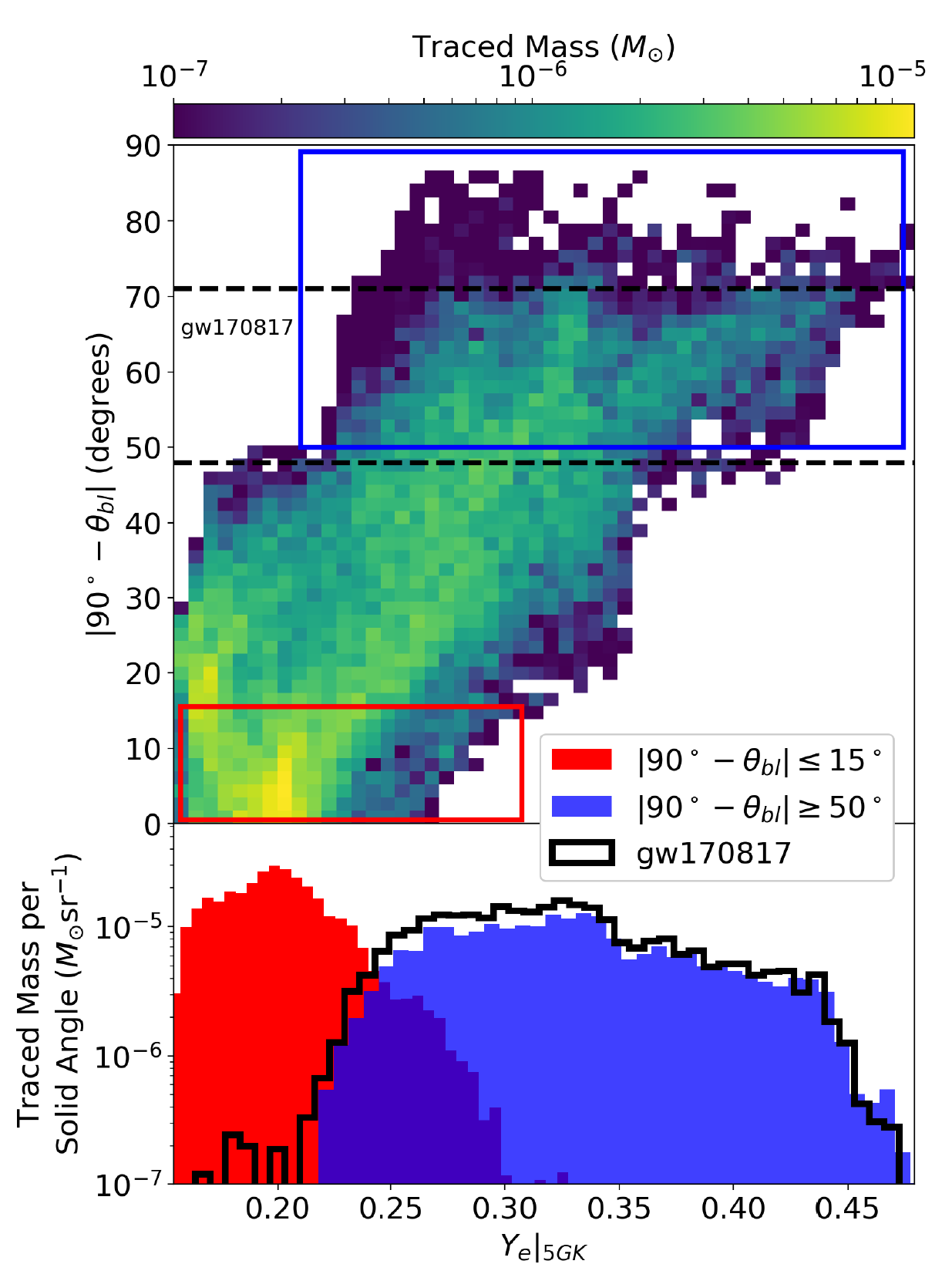 |
Surrounding a black hole Viewing angle critical for what composition you see Measured from the mid-plane of the disk This is consistent with observations of a blue kilonova Red, full $r$-process material seen near mid-plane The disk can contain a large amount of material But exactly how much is gravitationally unbound? Further... What is the important role of neutrinos? We need more analysis of these simulations... |
|---|
Neutrinos impact the nucleosynthesis
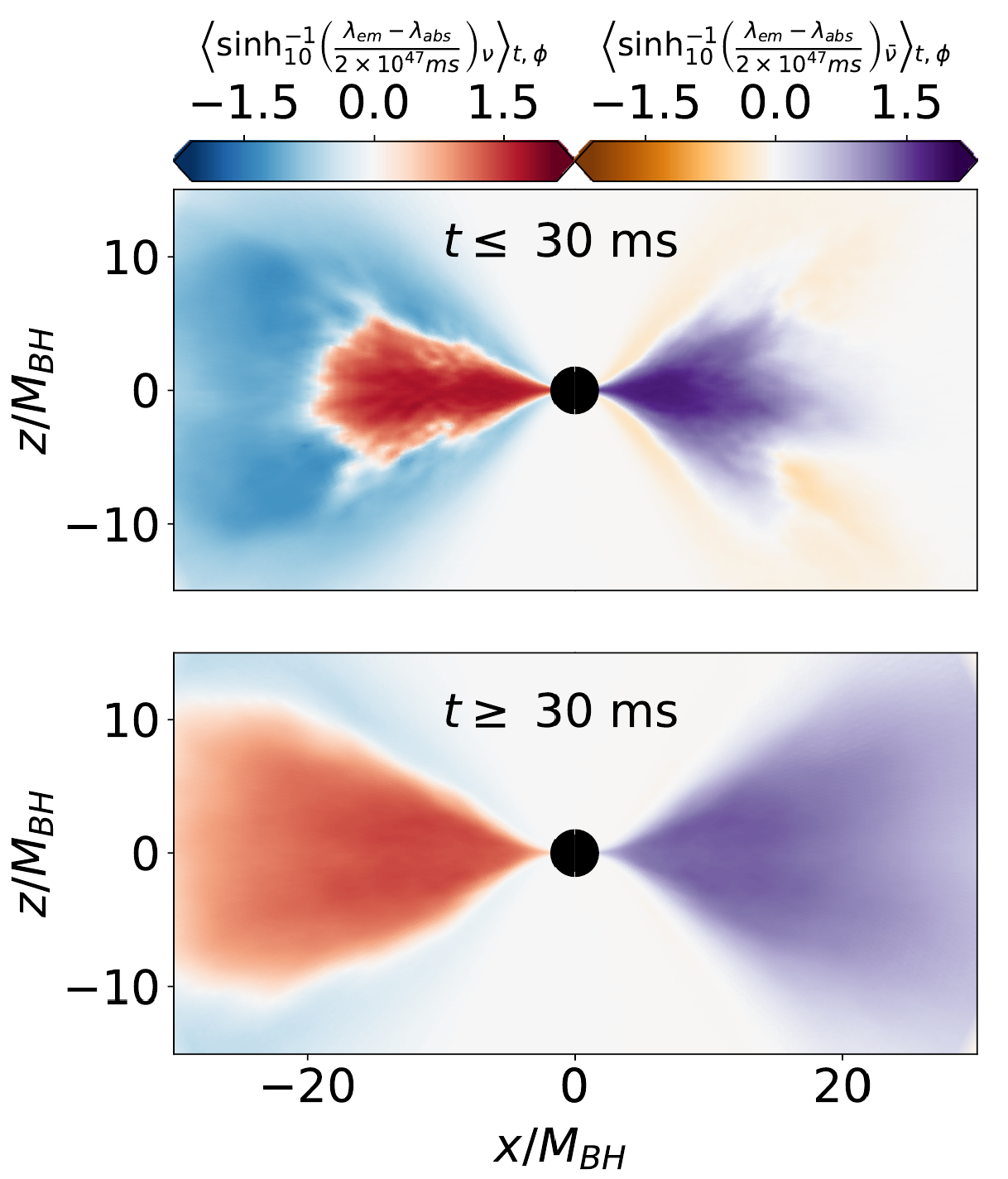
Neutrino absorption and emission is considered
Sets the $Y_e$ for the nucleosynthesis from disk ejecta
Neutrinos impact the nucleosynthesis
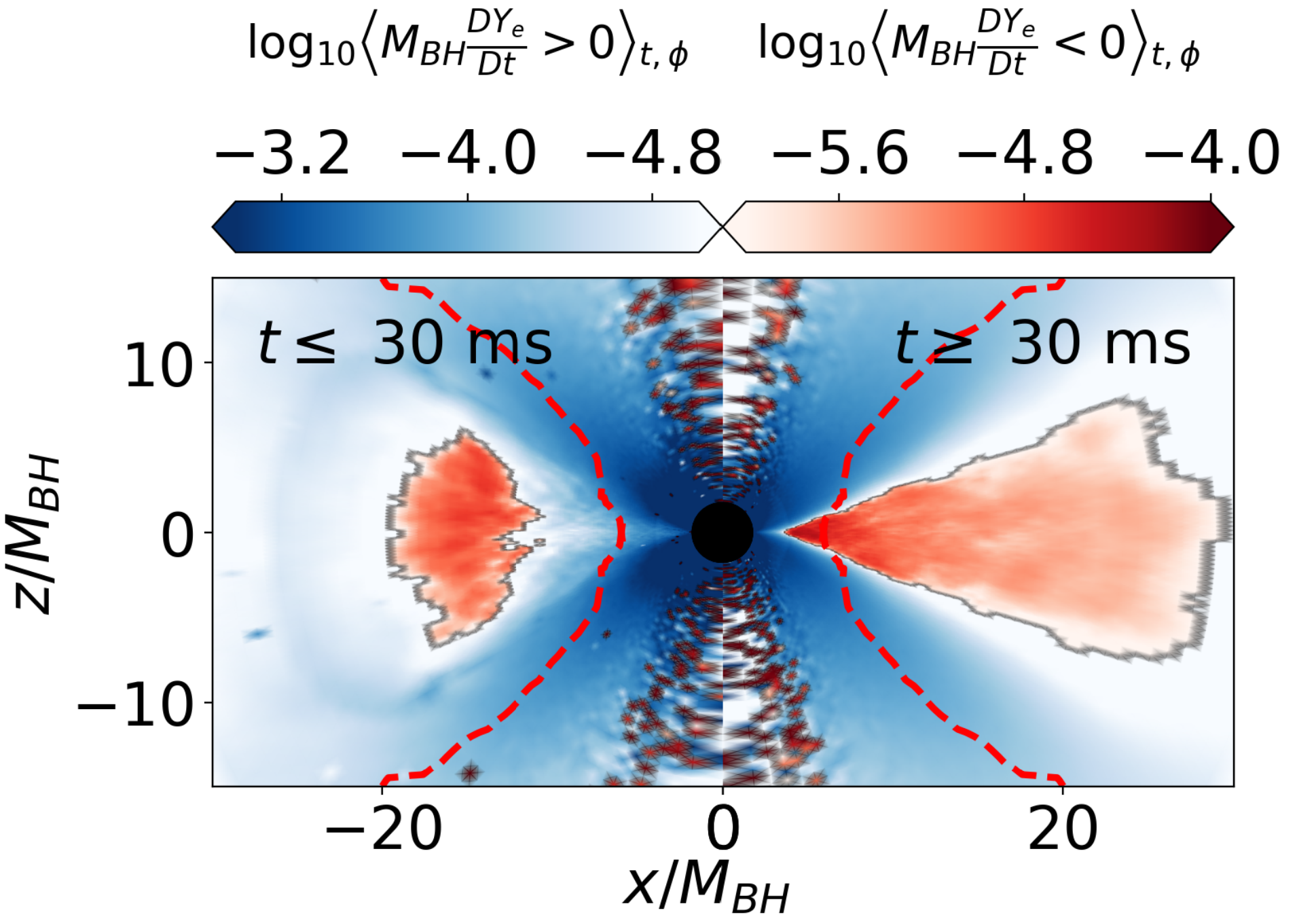
Exactly how the ejecta is processed by neutrinos is not fully analyzed yet
Blue region has high $Y_e$; red lower $Y_e$
The transit time away from the disk is crucial
Resultant nucleosynthesis

Nucleosynthesis simulation with J. Lippuner's SkyNet
Mass weighted trajectories suggest blue kilonova
But it is critical to get the full morphology correct...
Merger
Morphology & Composition
Merger Morphologies
 |
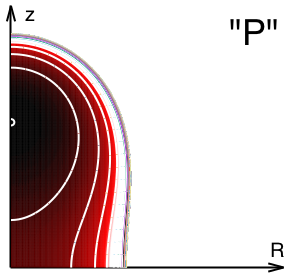 |
 |
 |
 |
|---|---|---|---|---|
| ↑Hourglass | ↑Peanut | ↑Sphere | ↑RBC? | ↑Torus |
We break down the density into simple constructive components
We study these single components and two component admixtures (1 blue + 1 red)
We want to understand the impact to the lightcurve
Impact on lightcurves
 |
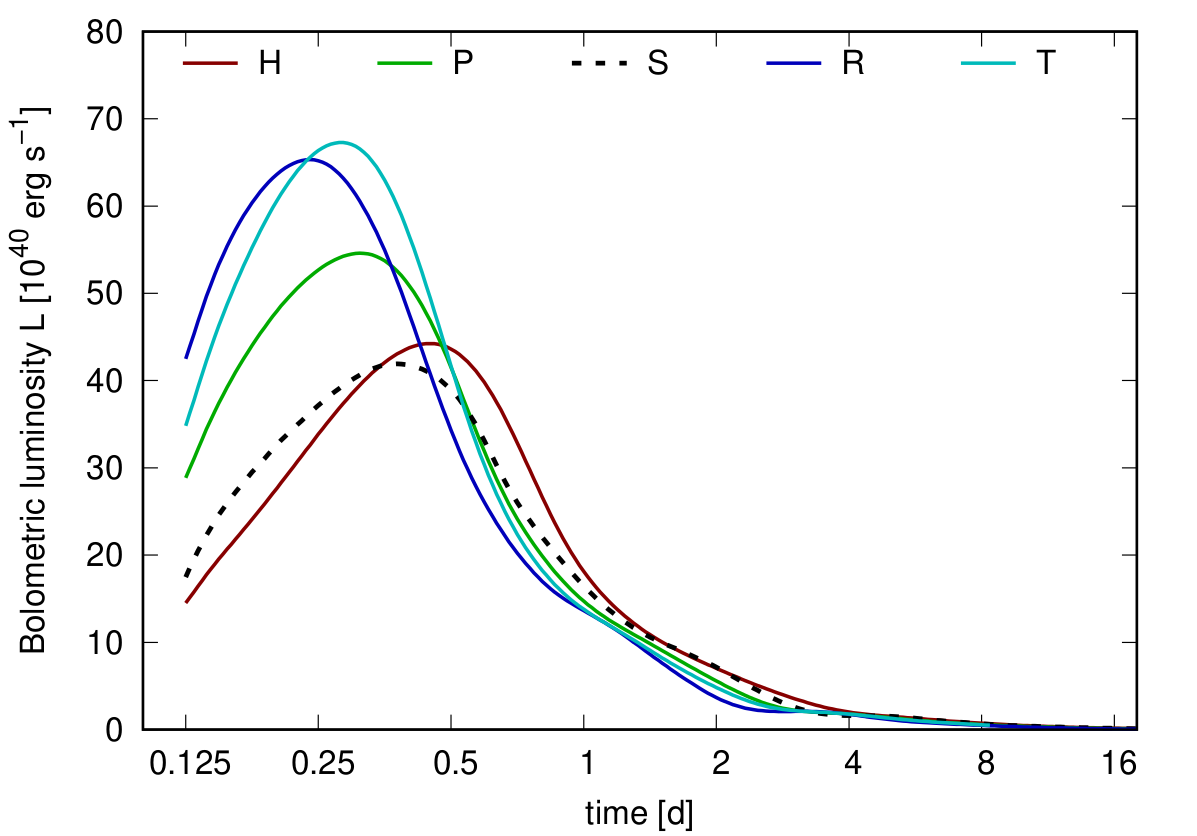 |
|---|---|
| ↑Solar-like | ↑$Y_e=0.30$ |
Brightness of single components is very sensitive to merger morphology
Two components still being analyzed... uncertainty in $M_{\odot}$ is larger than previous studies suggest
Sensitivity to Nd($Z=60$)

Performed sensitivity study of composition of all lanthanides with new LANL line-binned opacities
The presence of even a minor amount of neodymium produces a red kilonova
Uncertainties in opacities further obscure claims of mass ejecta from different components
Observational Impact of Californium
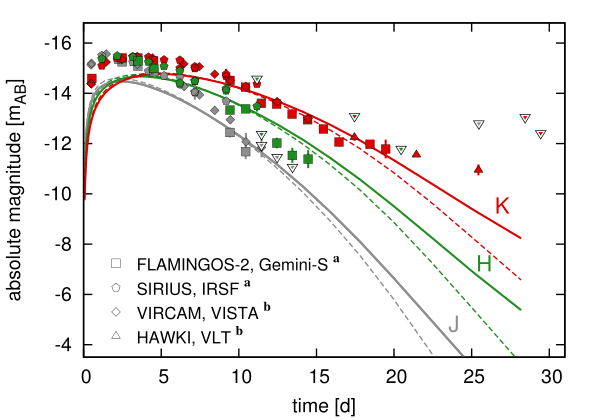
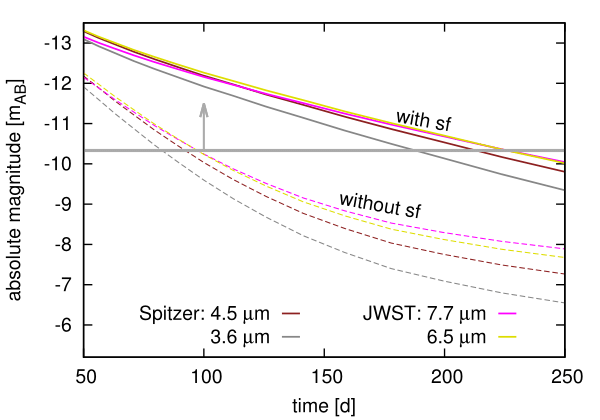
Both near- and middle- IR are impacted by the presence of $^{254}$Cf
Late-time epoch brightness can be used as a proxy for actinide nucleosynthesis
Future JWST will be detectable out to 250 days with the presence of $^{254}$Cf
This was the conclusion of previous work with a single component outflow...
Can we ever observe due to merger morphology?...
Merger
$\gamma$-rays
Merger $\gamma$-rays
Another possible (yet very difficult) option is to attempt to observe the spectra from transients / remnants
For the $r$-process we should search for signatures of actinides...
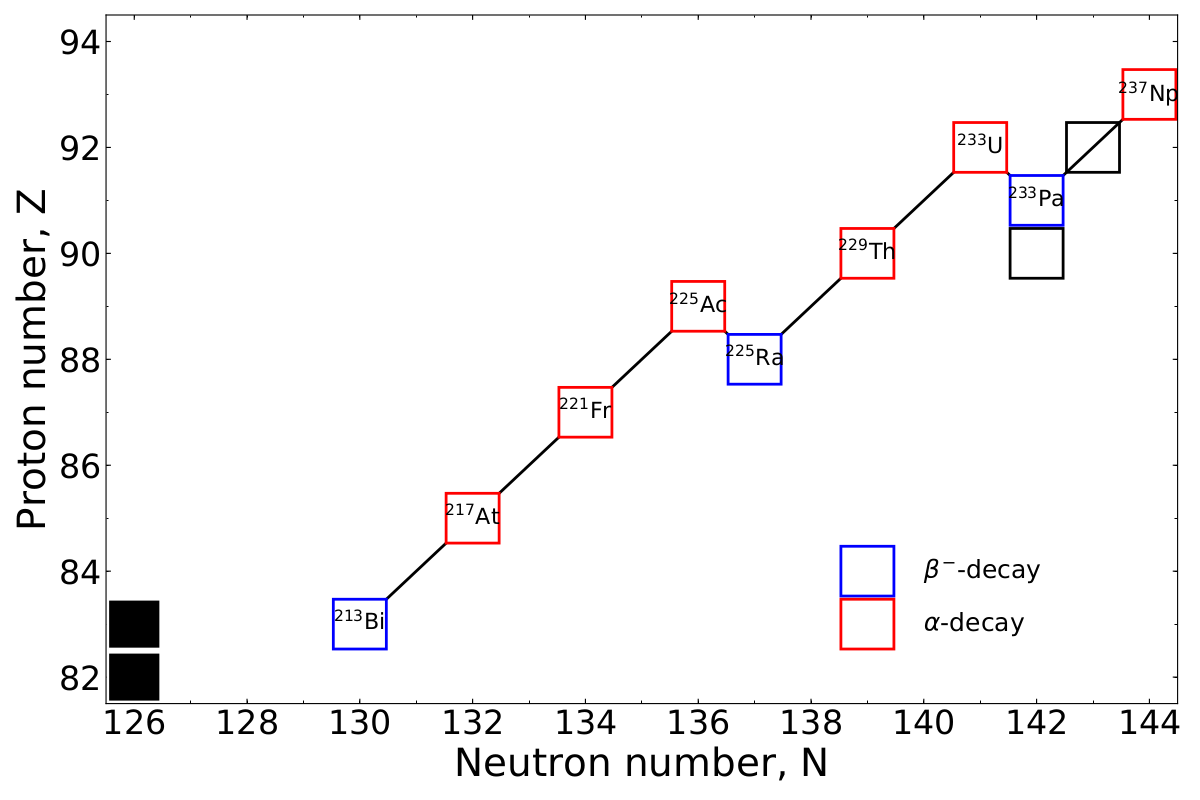
This involves following potentially complex decay chains...
$\gamma$-ray spectrum at 10 kyr
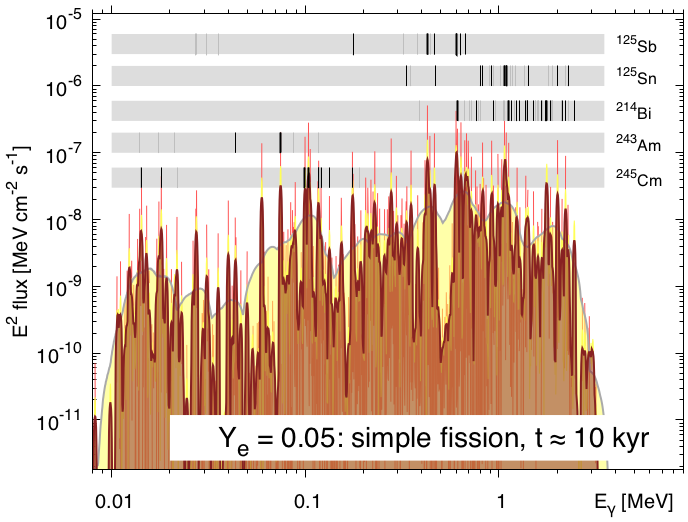
Distinct elements do arise
This depends sensitively on observational timescale
Can we do this with future space missions?
Special thanks to
My collaborators
A. Burrows, J. Dolance, W. Even, C. Fontes, C. Fryer, A. Hungerford, J. Lippuner, J. Miller, W. Misch, O. Korobkin, B. Ryan, T. Sprouse, R. Surman, W. Vestrand, R. Wollaeger
▣ Students ▣ Postdocs ▣ CTA staff
Summary
Neuron star mergers (NSMs) are a promising site for heavy element synthesis
New insights into neutron star mergers from CTA:
Accretion disks ▴ Morphology & composition ▴ Late-time observations
The material from accretion disks may contain the bulk of the ejecta from a merger
Observations depend on angle & morphology & composition
This is important if we want to prove definitively that heavy elements such as the actinides were made in NSMs
Future space missions may be able to detect $\gamma$-rays from long-lived radioactive decay
Results / Data / Papers @ MatthewMumpower.com
